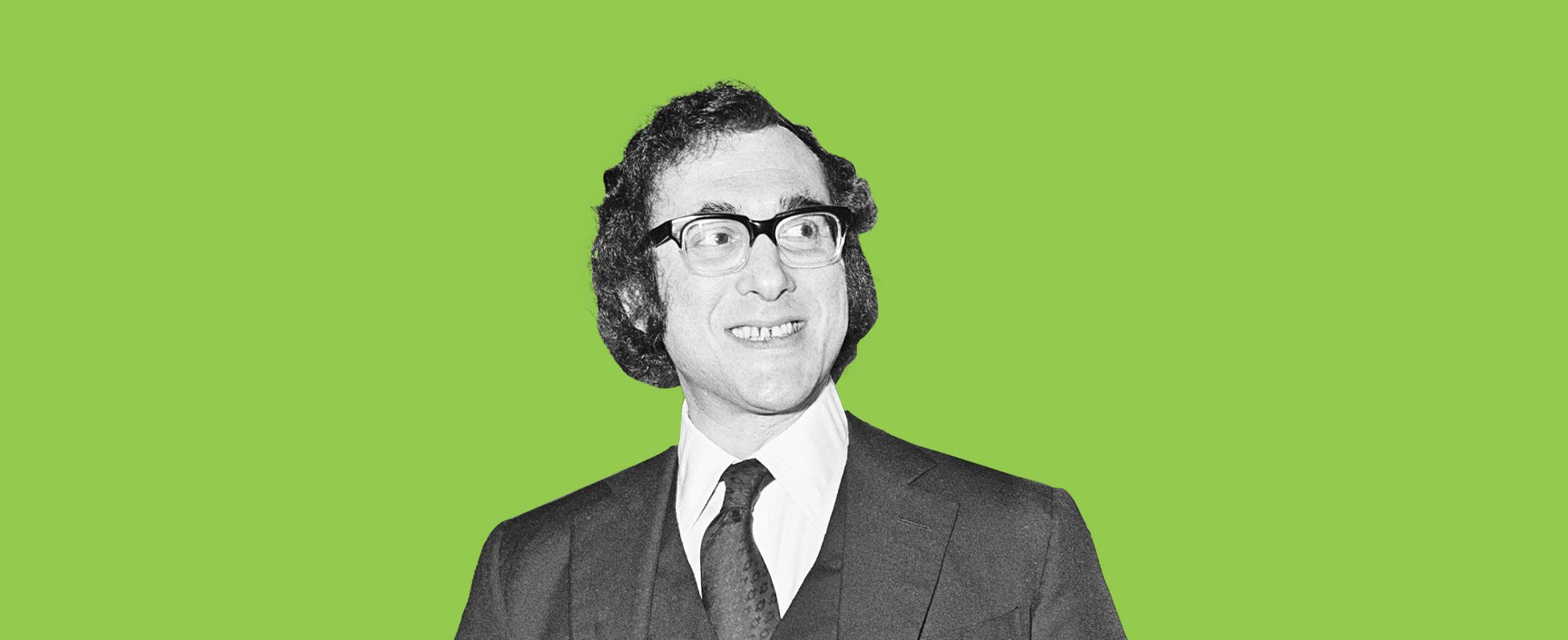Postmodernism sounds simple, right? It’s the thing that came after modernism, as the name clearly suggests. True, it emerged as an intellectual stance in the mid-20th century as a rejection of modernism — but there’s some overlap between the two. Modernism can be defined as encompassing artistic works produced from the 1860s to the 1970s that broke with the traditions and artistic conventions of the past. Postmodernism, however, is by its very nature a more difficult concept to pin down.
The term “postmodern” is used in academia, art, pop culture, and elsewhere, with the precise meaning often shifting depending on where it’s used. Certain characteristics, however, remain more constant than others. Postmodernism emphasizes the elusiveness of meaning and knowledge. It is riddled with skepticism, irony, and the rejection — or at least the critique — of universal truths and objective reality. Artist Brad Holland said, "In modernism, reality used to validate media. In postmodernism, the media validate reality. If you don't believe this, just think how many times you've described some real event as being 'just like a movie.'"
All this makes it a mightily nebulous concept — and one that has many critics of its own. Noam Chomsky, for one, argued that postmodernism was meaningless, and suggested that it should be consigned “to the flames.” Christopher Hitchens, meanwhile, stated that “the postmodernists’ tyranny wears people down by boredom and semi-literate prose.”
Love it or hate it, postmodernism has cemented its place in the philosophical and artistic realm. It is ubiquitous in academia, and has found its way into popular discourse, too, with everything from David Bowie to Blade Runner given as examples of postmodernity. It’s a rabbit hole, but one certainly worthy of further exploration.
Multiplicity of truths
The British playwright Harold Pinter never liked being labeled, but he is frequently mentioned among postmodern writers, in part due to his views on the nature of truth. He once wrote, “There are no hard distinctions between what is real and what is unreal, nor between what is true and what is false. A thing is not necessarily either true or false; it can be both true and false.”
The postmodern worldview denies any single truth, be it moral, historical, or otherwise — a controversial idea, especially in what many see as our “post-truth” age. Objective reality is very much in question when it comes to postmodernism. “Don’t be real, be postmodern,” sang the Scottish rock band Idlewild in “These Wooden Ideas,” a song whose lyrics criticize postmodern culture and philosophy. Or as Filipino writer Miguel Syjuco put it when asked about postmodernism, “Where modernism was about objectivity, postmodernism was about subjectivity. Where modernism sought a singular truth, postmodernism sought the multiplicity of truths.”
Skepticism in all
Tied in with the rejection of hard truths is the postmodernists’ overall skepticism. In The Postmodern Condition (1979), the French philosopher Jean-François Lyotard famously wrote, “Simplifying to the extreme, I define postmodern as incredulity toward metanarratives” — metanarratives here referring to any unified, universal story about everything that is. In postmodernism, there is an overarching mistrust of these narratives, including such things as science, human progress, and the Enlightenment. Some might call this pessimistic. The historian Robert Hewison said, “Postmodernism is modernism with the optimism taken out.”
Undefined artistic style
One of the reasons why postmodernism is hard to define is its lack of a defined style in artistic terms. As the Tate Museum website points out, postmodernism is anti-authoritarian by nature, refusing “to recognize the authority of any single style or definition of what art should be.”
Instead, postmodern art — whether in painting, cinema, architecture, or otherwise — tends to blur the divide between high and low art, and often refuses to follow any typical notions of gender, race, genre, and even time. It also tends to reject the very notion of progress in art, including concepts of authenticity and originality — something that led the art critic Irving Sandler to say, “It’s impossible in our postmodern era for anyone to be original — for anybody to do what Jackson Pollock did.”
Culture of fragmentation
Fragmentation is a trait of postmodernism, especially in literature. Postmodern writers (in their skepticism) distrust the wholeness and conclusiveness associated with traditional stories. They therefore seek alternative ways of structuring their narratives. A prime example of this is The French Lieutenant’s Woman, a historical fiction novel by John Fowles in which the reader is given three possible endings.
The fragmentation, or disintegration, inherent in postmodernism is also highlighted by The Oxford Dictionary of Literary Terms, which, citing the philosopher Jean Baudrillard, states, “Postmodernity is said to be a culture of fragmentary sensations… in which the traditionally valued qualities of depth, coherence, meaning, originality, and authenticity are evacuated or dissolved amid the random swirl of empty signals.”
The death of postmodernism?
In 1992, the Scottish novelist Gilbert Adair wrote that postmodernism “represents a moment of suspension before the batteries are recharged for the new millennium, an acknowledgment that preceding the future is a strange and hybrid interregnum that might be called the last gasp of the past.”
In other words, postmodernism must eventually die — and maybe it already has. In 2006, the British cultural critic Alan Kirby published his essay The Death of Postmodernism and Beyond, in which he argued that postmodernism as a cultural period is over. He pulled no punches, writing that “the only place where the postmodern is extant is in children’s cartoons like Shrek and The Incredibles… a source of marginal gags in pop culture aimed at the under-eights.” And Kirby is not alone in his opinion that postmodernism is no more.
So what next? Well, “post-postmodernism” is now a buzzword, at least in academic circles. Kirby himself has suggested pseudomodernism and digimodernism as a new paradigm, taking into account the inexorable rise of digital technology. So, the rabbit is already digging a new hole — but where it will go, we don’t yet know.
Photo credit: Evening Standard/ Hulton Archive via Getty Images
















